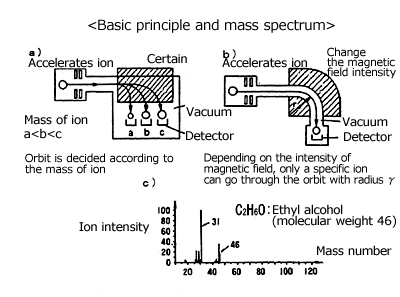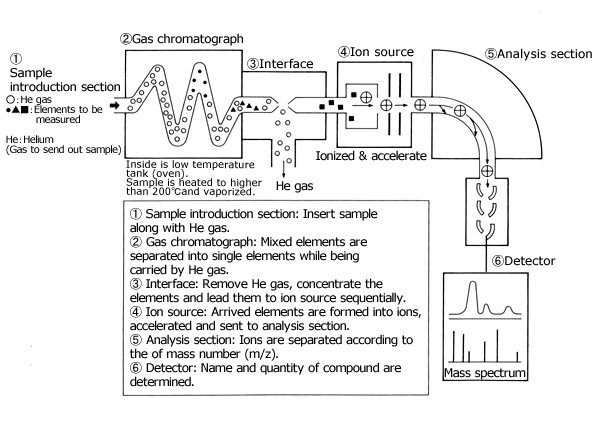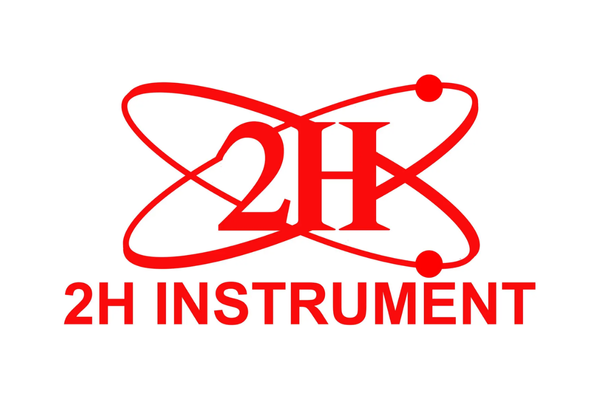GC/MS utilized in the environmental analysis.

A long time ago, Greek philosophers passionately debated about “what is a substance?”, leading to the inception of the idea of an “element” and “atom”. It was not until the period between the 17th and 19th centuries that these concepts were scientifically proven.
The idea of an isotope was developed in 1912 when J. J. Thomson found a neon atom with a mass of 22 rather than the expected neon atom of mass 20. The instrument used to make this discovery was a mass spectrometer: MS. Since then, this instrument has become the only method used to determine the precise mass of an atom. In addition, since the latter half of the 20th century gas chromatography (GC: used to separate a mixtures) has been combined with mass spectrometry. The gas chromatograph mass spectrometer (GC/MS) has been developed to separate and analyze mixtures with high sensitivity, and as a result, is used in a wide range of fields, such as measurement of dioxin, organic compounds in drinking water, and concentrations of drugs in blood, as well as a tool for developing new pharmaceutical products.
High Performance Gas Chromatograph – Time-of-Flight Mass Spectrometer – 2hinst.com
Protecting Your Future
There are many kinds of Gas Chromatograph Mass Spectrometers, from the ones on space probes for measuring the elements found on Mars and comets, to the ones used to determine the structure of protein. They are used widely in the fields of environment and life science. This instrument is an analysis tool that is expected to continue to be used and developed further in the future.
As science advances, questions spontaneously arise from various perspectives.
How did the modern science investigate the composition of moon rocks, or determine that there is no life on Mars?
Has the PCB contamination spread to Antarctic?
Is the water in Tokyo Bay safe for the fish and shellfish living there?
Where do the large quantities of agrichemicals which have been spread in the fields go?
The gas chromatograph mass spectrometer can provide clear answers to questions like this.
Now, we’ll describe how the GC/MS works, and provides answers, while briefly explaining the principles and process of measuring a substance.
Principle of Mass Spectrometer

An MS is an instrument to precisely measure the mass (weight) of each chemical compound contained in a substance, and to identify each compound and its quantity from the weight. The basic principle of MS utilizes the nature of ions. By accelerating an ion (an atom or molecule with an electrical charge) to a certain speed, and passing it through a magnetic field, the path of the ion will be deflected by the magnetic field. The amount of deflection depends on the intensity of the magnetic field and the mass number of the ion. A similar principle is used in the Braun tube of an old cathode ray TV, in which electrons are deflected by passing them through a magnetic field.
Suppose that we accelerate various ions from the left with the same energy, as shown in Fig. a).
If we set the intensity of the magnetic field to a constant value, the path of the smaller mass (lighter) ions will be deflected by the magnetic field more than the heavier ions, so they arrive at the detector at different positions. Therefore, by obtaining mass spectrum that detects the position at which the ion arrives, the kind of the compound is known (qualitative analysis), and it is also possible to determine the quantity (quantitative analysis).
In an actual MS the ion path is kept constant, and the strength of the magnetic field is varied, as in Fig. b). This makes it possible to measure the type and quantity of various ions using one detector. What has been detected is called as mass spectrum and is displayed as a graph c) with many peak groups. Usually, the electron charge mass ratio (m/z) is indicated on the horizontal axis, and ion intensity (showing quantity) is indicated on the vertical axis.
Actual Measurement by GC/MS
Now, let’s explain GC/MS using a case study of PAH (Poly Aromatic Hydrocarbon, substances known to be carcinogenic) detected in a lake in North Europe, a region regarded as having the least environmental contamination.
First of all, the organic compound components are extracted from a volume of lake water collected at the site equivalent to about one bottle of beer. The one beer-bottle’s amount of water is concentrated into a quantity for one injection ampule (5ml). The apparently clean water turns into a thick, blackish brown solution after extraction and concentration. It is obvious that it contains many organic compounds. 1μl (1/1,000,000 liter) of this solution is injected into the GC.
A GC is a device to separate each component of the extracted organic compounds (mixture) and to transfer them to the MS. The separation is performed using a capillary column (a slender tube of about 0.3mm inner diameter coated with a solution layer to separate the components. The type of solution layer must be selected according to the purpose). Helium gas is used to carry the sample mixture through the capillary column.

In the pictures
Sample Introduction Section: Insert a sample along with He gas.
Gas Chromatograph: Mixed components are separated into single components while being transferred by He gas.
Interface: Removes He gas, concentrates and introduces the components into the ion source in sequence.
Ion Source: The components received are ionized and accelerated, then sent to the analysis section.
Analysis Section: Ions are separated by mass number (m/z).
Detection Section: The name and quantity of each compound is investigated.
The separation here is quite precise, and even if there are several hundred different components, they will be separated without a mistake. Each component separated by a GC will be transferred to the ion source of the MS separately in sequence, with the helium gases removed by the interface on the way.
The ion source ionizes the received components (state where a molecule is charged with electricity. Here, it means that the electrons typically circling around a molecule are ejected by being struck with an electron coming from outside. This makes the molecule a positive ion, carrying a positive charge). The ionized molecules are accelerated and sent to the analysis section (electric field and magnetic field). There are a variety of ionization methods, including the EI method (electron impact method) using bombardment by electrons, the CI method (chemical ionization method) using chemical reactions, the FD method (field desorption method) using an electric field to induce ionization, a method that is a forte of our company, and the FAB method (fast atom bombardment method) using bombardment by high-speed electrons to ionize each component.
Now, a voltage of several kV is applied to each ion of the ionized organic compound, and each ion is accelerated and sent to the analysis section. At the analysis section, each ion is separated by its mass, according to the intensity of the magnetic field as mentioned earlier; then, they arrive at the detector section. The accuracy of the detection (resolution) is quite precise. To illustrate, instead of saying someone weighs 56kg we are able to say that the weight is 56.9985kg, an accuracy of up to 4 decimal places. In addition, not only weight, but also” fingerprints and wrinkles” (mass spectrum) can be read in 0.1 second. Moreover, the detection sensitivity (minimum quantity that can be reliably detected) is as little as fg order (fg:10-15g)/
This is a much higher sensitivity than is needed to find a single person from among the total population on the globe.
The data detected this way is compared with the data which is already in the computer (library) and printed out as measurement result instantly. As such, each of the components of PAH in the water from the North European Lake has been completely identified, including benzopyrene, a cancer-causing agent.
Source: Jeol.com
